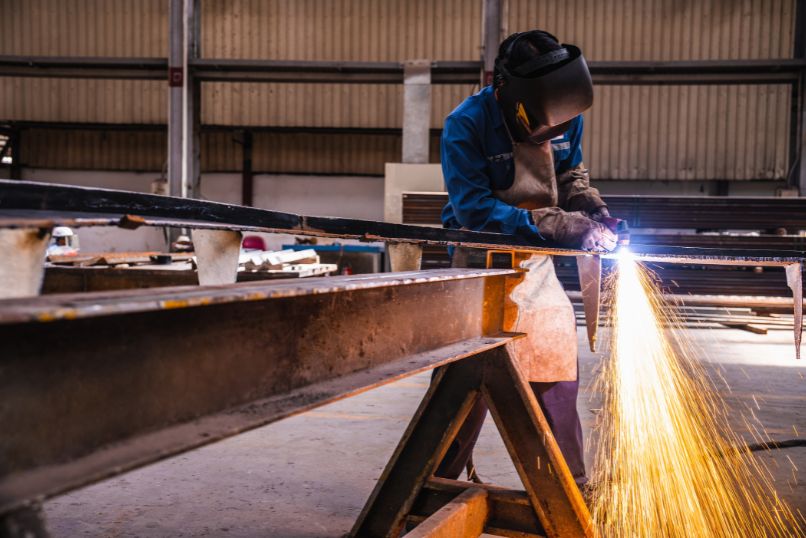Metal fabrication is the process of cutting, shaping, and joining metal materials to create a product or structure. It is an important part of many industries, and it’s been a part of the world for centuries.
Whether the fabrication process builds a unique custom piece, large-scale structures like bridges and buildings, or components for industrial machinery, fabricators usually follow the same basic steps. Let’s take a brief look at the metal fabrication process and what it entails.
Metal Fabrication Process Overview
The first stage in the metal fabrication process is cutting. You can do this with various tools, such as saws, shears, and plasma cutters, depending on the project type. Cutting is generally followed by forming, which involves bending and shaping the metal into its desired shape using hammers or presses. After forming comes welding, which combines two pieces of metal using heat or electricity. Once you complete these steps, finishing processes such as painting and polishing may enhance the product’s or structure’s appearance.
Types of Metals Used in Fabrication
The type of metal used for a particular project depends on its purpose and application. Common metals used in fabrication include steel, aluminum, stainless steel, copper alloys, brass alloys, titanium alloys, and other specialty metals. Each metal type has unique properties that make it suitable for specific applications.
For example, stainless steel is often in projects that require corrosion resistance due to its high chromium content. Other factors, such as cost and availability, can influence the material used in a particular project.
Safety Considerations With Metal Fabrication
When working with metals, certain safety considerations need consideration. These safety steps include wearing protective equipment when handling sharp objects such as saws or shears; avoiding contact with hot surfaces; and ensuring proper ventilation. In addition, always follow safety protocols set out by local authorities. It’s also important to ensure that workers have adequate training before beginning work on any metal fabrication project to know how to operate machinery safely and handle materials properly.
As you can see from this brief overview of metal fabrication processes, many steps involve creating products from raw materials using specialized tools and techniques. From selecting an appropriate material to taking safety precautions while working with metals, each step requires skillful execution to produce quality results every time!
Understanding these processes helps businesses make informed decisions when choosing materials for their projects. This ensures that any project, from a large-scale industrial one to a small-scale home improvement task, will turn out just how they envisioned them!
Wieland Diversified is a metal alloy supplier that can help you to find the best material for your projects. Whether you’re looking for stainless steel, copper alloys, or another type of metal, we can guide you through the selection process and provide technical assistance. Contact us today to learn more about metal fabrication and find the right material for your project.

